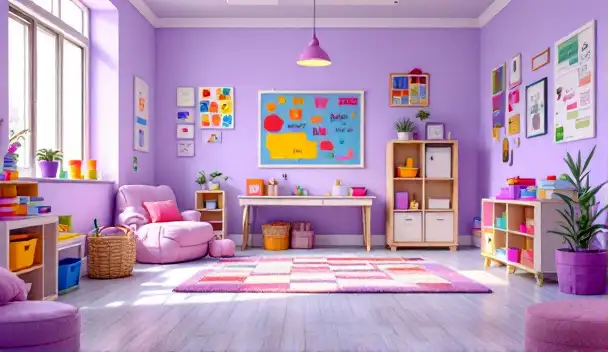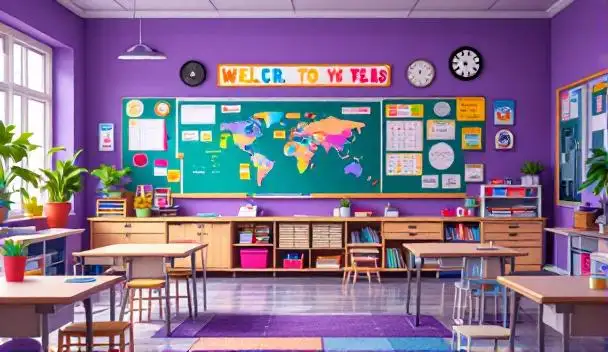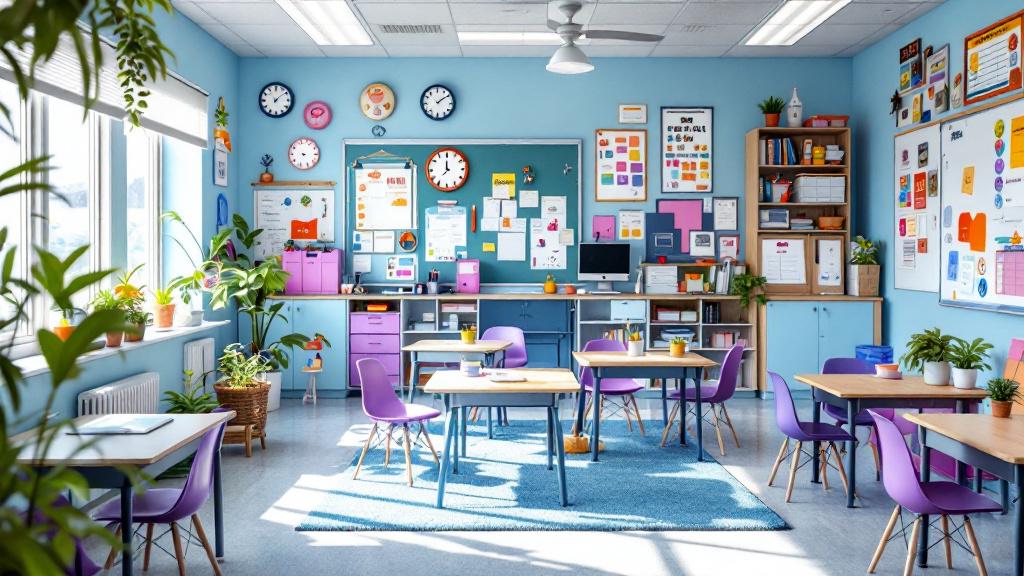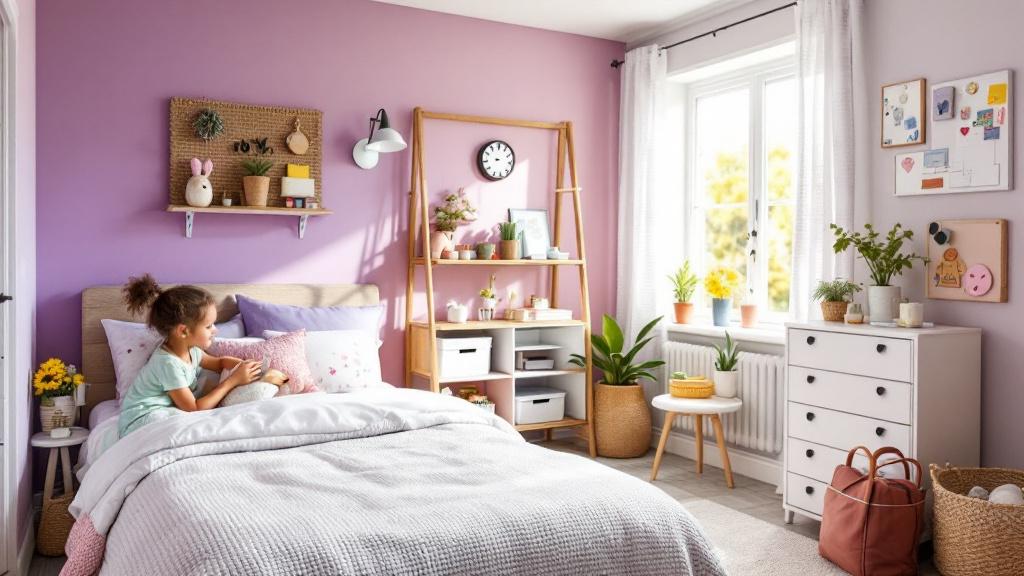Understanding the Role of Routine in ABA Therapy
Creating a consistent home routine is fundamental to maximizing the effectiveness of ABA therapy for children with autism spectrum disorder (ASD). When routines are predictable and structured, children feel more secure and are better positioned to learn new skills, manage behaviors, and engage meaningfully in therapy and daily activities. This article explores why routine and consistency are vital, how families can establish effective routines, and the profound impact these have on therapy outcomes.
Why Routine and Consistency Are Critical in ABA Therapy

Why is creating a consistent home routine important for ABA therapy success?
Creating a regular and predictable home routine plays a vital role in the effectiveness of ABA therapy for children with autism spectrum disorder (ASD). When routines are consistent, children experience a sense of stability and security that helps reduce feelings of anxiety and stress. This predictable environment makes it easier for children to anticipate and manage daily transitions smoothly.
Structured routines support skill acquisition by providing clear, step-by-step guidance, which encourages independence and positive behaviors. Visual schedules, timers, and social stories are powerful tools used to help children understand routines and prepare for changes, reinforcing learning and emotional regulation. The stability of a routine enhances the child's ability to focus and engage in therapy activities, leading to better outcomes.
In addition, routines help embed ABA principles into daily living, making skill practice a normal part of everyday activities. This consistency fosters continuous development, emotional wellbeing, and social engagement, ultimately maximizing the benefits of therapy in various settings.
How does routine and consistency influence therapy outcomes for individuals with ASD?
Routine and consistency profoundly impact therapy results by creating an environment conducive to learning and behavioral progress. When daily activities and interactions follow a predictable pattern, children with ASD are less likely to experience confusion or distress, which often hampers learning.
Consistent routines reinforce the skills taught during ABA sessions by providing opportunities for repetition and reinforcement. This repetition strengthens neural pathways associated with memory and learning, aiding in skill retention and generalization across settings.
The stability provided by routines supports communication and social skills development. Structured interactions and clear expectations help children understand social cues, initiate conversations, and build relationships. When routines and strategies are maintained consistently across home, school, and therapy environments, children develop trust and emotional security, which are critical for sustained engagement and progress.
Overall, routine and consistency form the foundation of effective ABA therapy, directly influencing the speed and durability of skill acquisition.
What is the role of family involvement in maintaining consistent routines for ABA therapy success?
Family involvement is a cornerstone of successful ABA therapy because it ensures routines are reinforced outside of therapy sessions. When parents and caregivers actively participate in implementing strategies, skills learned during therapy are more likely to generalize to everyday situations.
Involving families through training and ongoing communication enables them to carry out ABA techniques like prompting, modeling, and positive reinforcement at home. This consistent application across various settings helps solidify behaviors and skills, making them more durable.
Good family engagement also allows routines to be tailored to fit the child's unique needs and preferences, promoting greater motivation and cooperation. Additionally, when families understand the goals and strategies of ABA, they feel empowered and confident in supporting their child's progress.
Collaborative efforts between therapists and families foster a unified approach, leading to more significant gains and long-lasting improvements. Family commitment and consistency enhance overall therapy outcomes, providing the child with a stable foundation for learning and development.
Strategies for Establishing Effective Home Routines

What strategies can families use to establish effective home routines to support ABA therapy?
Families play a crucial role in the success of ABA therapy by creating routines that are consistent and easily manageable at home. One effective approach is to develop a highly structured environment that includes visual supports such as visual schedules, cue cards, and timers. These tools help children understand what to expect next, reducing anxiety and promoting predictability.
Designating a specific, calm, and organized space for therapy sessions can significantly enhance focus and minimize distractions. This space should be stocked with necessary materials and arranged in a way that makes transitions between activities smooth. Incorporating visual timers and clear expectations into daily routines reinforces consistency and independence.
Integrating therapy routines into everyday life uses tools like visual schedules and clear rules for mealtime, dressing, or sequencing activities. This helps generalize skills and build confidence by combining learning with natural routines.
Collaborating closely with therapists and maintaining open lines of communication ensures strategies are tailored to the child's specific needs. Regular updates and feedback allow families to adjust routines, reinforcing positive behaviors. Positive reinforcement strategies, such as praise or rewards, motivate children to participate actively.
Promoting independence involves gradually fading prompts and giving children opportunities to perform tasks on their own. This not only consolidates learning but also helps in building self-sufficiency, widening the range of skills learned.
By thoughtfully establishing and maintaining these routines, families can support ongoing skill development, reduce behavioral issues, and foster a nurturing environment for growth.
How does effective scheduling and communication enhance therapy success?
Successful ABA therapy relies heavily on well-planned schedules and clear communication. Consistent scheduling creates a predictable routine that helps children understand what to expect, making transitions smoother and reducing anxiety.
Open communication between families and therapists ensures that the therapy strategies are effectively implemented at home. Regular updates and discussions facilitate the adjustment of techniques to suit evolving needs, which keeps the intervention relevant and effective.
When routines are structured yet flexible, families can respond to unexpected disruptions or changes, maintaining continuity without frustration. This adaptability fosters sustained engagement and better learning outcomes.
Furthermore, transparent communication builds trust and a collaborative relationship, encouraging families to participate actively and feel confident in applying learned techniques. When families understand the reasons behind specific strategies, they are more likely to implement them consistently.
Overall, effective scheduling combined with ongoing, open dialogue enhances the overall effectiveness of ABA by ensuring that interventions are personalized, consistent, and adaptable, leading to improved skill acquisition and retention.
Embedding ABA into Daily Routines for Skill Generalization

How does routine consistency enhance the effectiveness of early intervention in ABA therapy?
Routine consistency plays a vital role in the success of early intervention in ABA therapy. When therapy routines are predictable, children with autism feel more secure and less anxious. This stability helps them focus more on learning new skills rather than managing stress or uncertainty.
Creating a structured environment allows children to understand what to expect during each activity, making it easier to apply learned behaviors across different settings such as home, school, and community. Consistent routines also support the reinforcement of positive behaviors through predictable responses and feedback from caregivers and therapists.
Furthermore, routine stability encourages children to generalize skills because they see their behaviors being reinforced in various contexts that resemble their daily lives. This consistency promotes long-term retention of skills and reduces confusion, leading to better developmental outcomes.
In summary, maintaining regular routines is fundamental for effective early intervention, as it creates a safe space for children to learn and practice new behaviors, ultimately fostering growth in social, behavioral, and cognitive domains.
Promoting Behavior Stability and Emotional Well-being
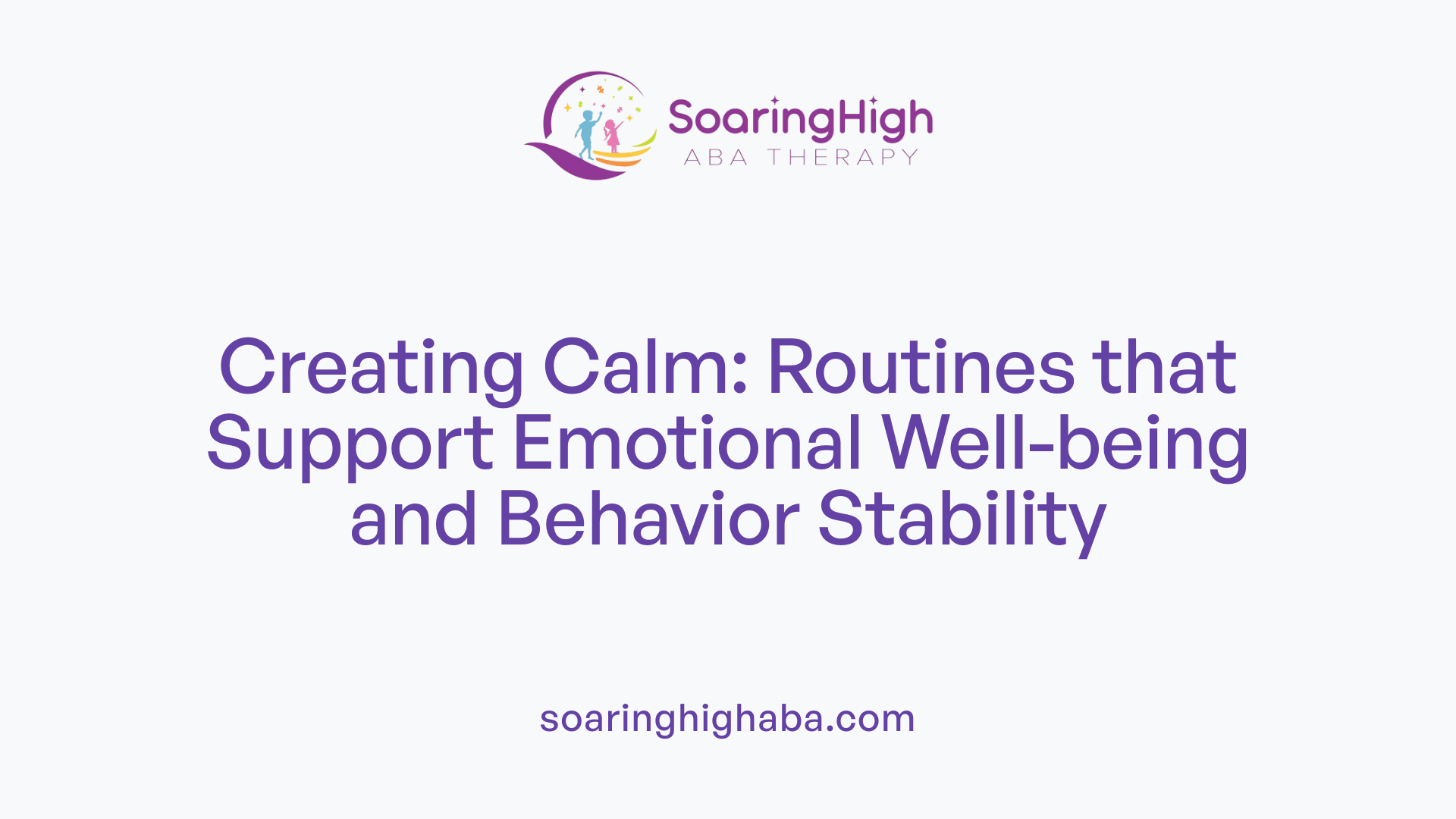
Why is creating a consistent home routine important for ABA therapy success?
Establishing a predictable and structured routine at home is vital for the success of ABA therapy for children with autism spectrum disorder (ASD). When routines are consistent, children experience less uncertainty, which significantly reduces anxiety and stress. This sense of stability allows children to focus better on learning and engaging in therapy activities.
A regular schedule helps children understand what to expect throughout the day. It simplifies transitions between activities, which can often be challenging for children with ASD. Clear routines support the reinforcement of skills learned during therapy, such as following steps or completing tasks independently.
Visual aids, like visual schedules or timers, play a crucial role in enhancing understanding and providing cues that help children anticipate upcoming activities. Social stories and other communication tools can prepare children for changes, making transitions smoother. This consistency nurtures trust and safety, enabling children to participate more actively and confidently.
Moreover, routines help children practice and generalize skills across different settings, promoting better behavior and emotional regulation. When children know what to expect and feel secure in their environment, they tend to exhibit fewer problematic behaviors and are more receptive to learning new skills.
Overall, a structured routine in the home creates a supportive environment. It maximizes the positive impact of ABA therapy by fostering emotional well-being, encouraging independence, and facilitating social and behavioral growth.
Long-term Benefits of Consistency in ABA Therapy

How does routine and consistency influence therapy outcomes for individuals with ASD?
Routine and consistency play a major role in optimizing the results of ABA therapy for children with ASD. When routines are predictable, they create a calming and stable environment that helps reduce anxiety and behavioral issues. This stability allows children to focus more effectively on learning new skills.
Consistent application of strategies, such as prompts, reinforcements, and visual supports, reinforces neural pathways related to memory and learning. Repetition in a structured manner aids in faster skill acquisition and better retention of behaviors.
Moreover, structured routines at home, school, and therapy settings foster trust and emotional security. This, in turn, encourages active participation and engagement in therapeutic activities. Over time, these routines support independence and adaptive skills, leading to more meaningful progress.
In addition, predictable interactions help improve communication and social understanding. When children experience consistent expectations and responses, they learn to anticipate outcomes, which enhances their social cognition.
Overall, consistent routines and environments are fundamental in creating an effective framework that facilitates learning, emotional regulation, and behavioral improvements for individuals with ASD.
What is the role of family involvement in maintaining consistent routines for ABA therapy success?
Active participation from family members is crucial in maintaining consistent routines, which directly affects the success of ABA therapy. Families serve as the primary support system, reinforcing skills learned during therapy sessions across different settings.
Training and involving parents enable them to understand and effectively implement ABA techniques such as prompting, positive reinforcement, and shaping behaviors. When families follow structured routines, they ensure that the child's environment remains stable and predictable, which helps generalize skills beyond therapy sessions.
Family involvement also fosters collaboration with therapists, allowing for continuous feedback and adjustments to treatment plans. This partnership ensures that strategies are tailored to the child's evolving needs.
Building family confidence through ongoing support encourages caregivers to proactively engage in routines, respond consistently to behaviors, and sustain progress. When siblings and other family members are included, they also reinforce learning and create a supportive environment.
In summary, the active involvement of families in therapy routines greatly enhances consistency, promotes behavioral reinforcement, and increases the likelihood of long-term success in skill development for children with ASD.
Utilizing Visual Supports and Adaptive Strategies

What strategies can families use to establish effective home routines to support ABA therapy?
Families can foster successful ABA routines at home by designing a consistent and structured environment. Using visual supports such as schedules, timers, and visual cues helps children anticipate and understand upcoming activities. Creating a dedicated, calm space for therapy that is free from distractions enables better focus and smoother transitions. Incorporating visual tools into daily routines—such as visual timers and clear expectations—reinforces skills and promotes independence.
Collaboration with therapists is vital; parents should maintain open communication to ensure strategies are personalized, practical, and consistently applied. Positive reinforcement is crucial—encouraging children to participate actively and gradually reducing prompts fosters autonomous engagement in routines. Through these methods, children develop confidence, learn expected behaviors, and achieve steady progress in their therapy.
To embed routines effectively, families should also review progress regularly, adjust strategies as needed, and celebrate small successes. This adaptive approach provides a solid foundation that supports sustained learning and behavioral improvements over time.
How can visual supports facilitate generalization of skills outside therapy sessions?
Visual supports like schedules, social stories, cue cards, and checklists are essential tools in helping children transfer skills from therapy settings to everyday life. When children recognize familiar visuals, they gain a clearer understanding of what to expect in daily activities, which reduces anxiety and increases compliance.
Incorporating visuals into routines such as mealtime, dressing, and task sequencing makes it easier for children to follow steps independently, fostering consistency and reducing reliance on prompts.
These tools encourage independence by helping children understand routines across various environments—home, school, and community. As a result, learned skills become more flexible and applicable in different settings. Visual supports serve as constant reminders and cues, making behaviors more predictable and easier to generalize, thereby broadening the child's ability to function effectively across different situations.
Managing distractions and disruptions
Implementing visual supports and establishing routines also involves managing distractions at home. Creating a designated therapy area with minimal interruptions helps children concentrate. Setting clear boundaries around the therapy space, such as using visual cues to signal “work time” versus “free time,” can minimize disruptions.
Consistency is crucial: maintaining a familiar environment with organized materials and predictable schedules provides children with a sense of security. When disruptions occur, quick and calm responses help maintain routine stability. Using timers to signal transitions and visual cues for breaks can help children adjust smoothly.
Flexibility is important, too; families should be prepared to adapt routines as needed, whether due to unforeseen events or specific challenges. Continuous assessment and adjustments—done in partnership with therapists—ensure that routines remain supportive and effective while accommodating life’s unpredictability.
| Strategy Type | Implementation Example | Benefit |
|---|---|---|
| Visual Schedules | Daily routines displayed with pictures or symbols | Enhances predictability, reduces anxiety |
| Designated Therapy Space | Calm, organized area with minimal distractions | Improves focus and work engagement |
| Routine Integration | Using visuals for mealtime, dressing, and sequencing activities | Promotes skill generalization and independence |
| Distraction Management | Clear boundaries, visual cues for transitions, minimizing interruptions | Sustains attention and reduces disruptive behaviors |
| Flexibility and Adaptation | Regular reviews and updates of routines with feedback from therapists | Ensures routines remain effective and responsive |
By combining these approaches, families can create an environment that maximizes the benefits of ABA therapy, supports skill generalization, and reduces challenges associated with distractions and disruptions.
Addressing Challenges and Sustaining Routines

How does routine consistency enhance the effectiveness of early intervention in ABA therapy?
Routine consistency plays a vital role in the success of early intervention using ABA therapy. When routines are predictable, children with ASD experience less anxiety and confusion, creating a safe environment conducive to learning. This structure helps them understand what to expect, which makes it easier to generalize skills across different settings such as home, school, and community environments.
Consistent routines also allow for the seamless application of ABA techniques like reinforcement, prompting, and shaping. By regularly following the same schedules, children can recognize patterns, which boosts their ability to acquire new skills more quickly. Additionally, familiar routines foster a sense of security, encouraging children’s active participation and motivation.
Maintaining a structured and predictable routine not only supports behavioral progress but also enhances social and developmental growth. It helps children develop independence, improves their problem-solving skills, and promotes better engagement in therapy sessions. Overall, the regularity of routines creates a stable foundation that amplifies the benefits of early intervention, leading to more positive long-term outcomes.
Fostering Family Participation and Collaboration

What role does family involvement play in maintaining consistent routines for ABA success?
Family involvement is crucial in ensuring the effectiveness of ABA therapy. When families actively participate, they help create a stable environment that reinforces learned skills across various settings, including home, school, and community. This consistency supports better skill generalization and makes therapy more impactful.
Engaging parents and caregivers through training enables them to understand ABA strategies deeply. By practicing techniques like prompting, reinforcement, and shaping at home, they can effectively support ongoing learning. Active participation during therapy sessions also provides opportunities for parents to observe and learn how to handle challenging behaviors, fostering a supportive environment.
Maintaining structured routines tailored to a child's needs helps reduce anxiety and confusion. Families who adhere to consistent schedules create a predictable environment, essential for children with ASD. This predictability strengthens the child's trust and comfort, boosting engagement during therapy.
Moreover, collaborative communication with therapists enhances therapy outcomes. Regular feedback loops allow for real-time adjustments, ensuring strategies remain effective and relevant to the child's evolving needs.
Family involvement also boosts motivation and commitment. When caregivers feel empowered and confident in implementing ABA techniques, they are more likely to stay consistent and reinforce skills outside therapy sessions.
In summary, family participation is a linchpin for ABA success. It fosters a cohesive approach where routines are maintained, skills are reinforced regularly, and challenges are addressed promptly. This partnership ultimately maximizes the child's potential for meaningful and lasting progress.
Creating a Foundation for Long-Term Success
Establishing and maintaining a consistent home routine is not merely about daily scheduling; it is a strategic pillar that underpins the success of ABA therapy for children with ASD. Consistency fosters a sense of security, promotes learning and generalization, reduces anxiety, and strengthens the collaboration between therapists and families. Implementing visual supports, structuring daily activities, and involving family members in the process maximizes the potential for meaningful behavioral and developmental progress. As routines become a natural part of everyday life, children are more likely to develop independence, improve social interactions, and achieve a higher quality of life. Ultimately, a well-structured, predictable environment serves as a catalyst for unlocking each child's capabilities and ensuring the long-term benefits of early intervention through ABA.
References
- 8 Reasons to Prioritize ABA Therapy: Consistency is Key
- Mastering Home-Based ABA Therapy Scheduling Strategies
- The Importance of Consistency in Autism Therapy
- Why Consistency is Important in Center-Based ABA Therapy
- The Importance of Consistency in ABA Therapy
- 5 Habits for Success with ABA Therapy Programs
- Establishing a Home-Based ABA Therapy Routine for Early ...








































